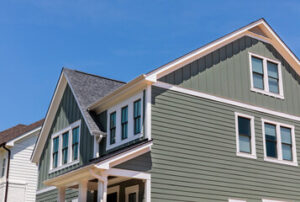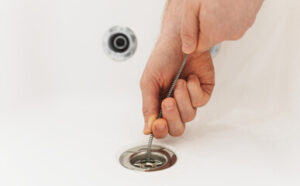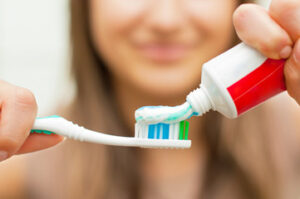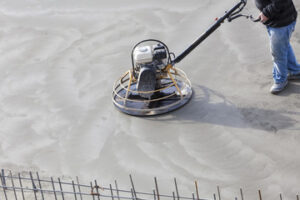Repairing or replacing your roof can increase the value of your home. It can also help protect important possessions from damage.

Some minor repairs, such as repairing surface cracks or patching a hole in the attic floor, can be done by homeowners themselves. Other maintenance tasks include trimming trees so they don’t overhang the roof, and ensuring that seals around chimneys, vents, and skylights are in good condition. Contact Ellingon Roofing LLC for professional help.
There are several factors that affect the cost of roof repair, including the extent of damage, roof size and material type. The more extensive the damage, the higher the costs will be. The pitch and design of the roof can also increase or decrease costs, depending on how difficult it is to access and work on. Typically, flat roofs are cheaper to repair than pitched ones.
The age of the roof is another factor to consider. An older roof may require repairs more frequently than a newer one. However, repairing an old roof can still be cost-effective in the long run, especially if the damage is limited to specific areas, such as a hole caused by a fallen branch or a small leak.
Minor repair costs generally range from $100 to $500, depending on the extent of the damage and the type of roof. Less intensive repairs include repairing minor leaks, patching holes and replacing missing shingles. These types of repairs are usually less costly than a full replacement, and they can prevent further damage to the home’s structure and contents.
Other common repairs include removing moss growth, fixing rot and treating mold and other water damage. Tile roofs are typically the most durable, lasting for up to 50 years. However, they can be damaged by hail and strong winds. These storms can also puncture shingles or leave dents in the roof’s surface.
A sagging roof is a sign of severe wear and tear and needs to be replaced or reinforced, which can be very expensive. Other expensive roof repairs include skylight repair or replacement and repairing the eaves. The eaves are the area where a roof meets a wall, and they can rust or get drenched in moisture. This can lead to wood rot and leaks throughout the house.
The cost of a roof repair also depends on the time of year. During the winter, snow and ice can make it more difficult to access the roof. Therefore, roofers are typically busier during this time. However, prices are often 10% to 15% lower during the fall.
Time
The time needed to complete the roof repair will depend on the extent of damage. Minor repairs can be completed relatively quickly, whereas major ones may require more time to assess and carry out. Additionally, the size of the home will also have an impact on how long the work will take.
Prompt roof repair can prevent small problems from escalating into bigger, more expensive issues. It can also help to extend the lifespan of the roof, maintain the structural integrity of the home, and prevent interior damage from leaks. This can save you a great deal of money and hassle in the long run. So if you notice any signs of roof damage, be sure to act as soon as possible. You may find that repair is a more cost-effective option than replacement.
Safety
When performing roof repairs, you are working at a height and falling from the roof could lead to serious injury. You want to take all necessary safety precautions. You should also have all the tools you need before you begin the job. You should also keep a tidy workspace to avoid any accidents. A cluttered work area is more prone to accidents, whether it’s a dropped tool or a tripping hazard. Make a plan to pause the work and clean up the workspace periodically to prevent any accidents from occurring.
Before you start the roof repair, you should inspect it and identify any damage. Look for water stains, sagging or leaking areas, damp beams, and any other signs of trouble. During this inspection, you should look for the source of any leaks and trace it back to its origin. Leaks don’t always come from the most obvious places, so it’s important to examine every part of your roof thoroughly.
If your roof is damaged, it’s a good idea to schedule an appointment for repairs as soon as possible. This will ensure that your roof is in tip-top shape and will protect your home from damage in the future. In addition, a roof that’s in good condition will save you money on energy bills and other costs.
A properly maintained roof can last for many years and prevent a need for replacement. Regular roof repair and maintenance can also reduce the risk of expensive structural problems. However, it’s essential to remember that a roof repair is not a permanent solution. Eventually, you will need to replace your roof.
A leaking roof is not just a nuisance – it can cause severe water damage to the interior of your home. Water can result in rotting, mold growth, and other serious health problems. You can avoid these problems by hiring a professional to perform roof repairs on a regular basis. Whether you need a minor repair or a full roof replacement, it’s important to do your research and choose the right contractor for the job.
Environment
Your roof is a shield that protects your building and its occupants from external elements. However, it can deteriorate quickly due to various factors. This is where the importance of regular roof repairs becomes apparent.
In addition to providing protection from the weather, roof restoration helps to manage stormwater runoff and promotes a healthy aquatic ecology. It also reduces the strain on neighbourhood sewage systems and prevents groundwater pollution. Using green roofs or enhanced gutter systems during roof restoration can also help to lower energy bills and decrease the need for new roofing materials.
When a home owner neglects to perform roof repair, it may lead to structural damage that requires costly replacement. Furthermore, if the property is put up for sale, a potential buyer might walk away or ask for a lower price.
A well-maintained roof is an essential component of a building structure. It acts as a protective barrier against the elements and keeps occupants safe and comfortable. It is also an important investment that helps to maintain the value of a property.



